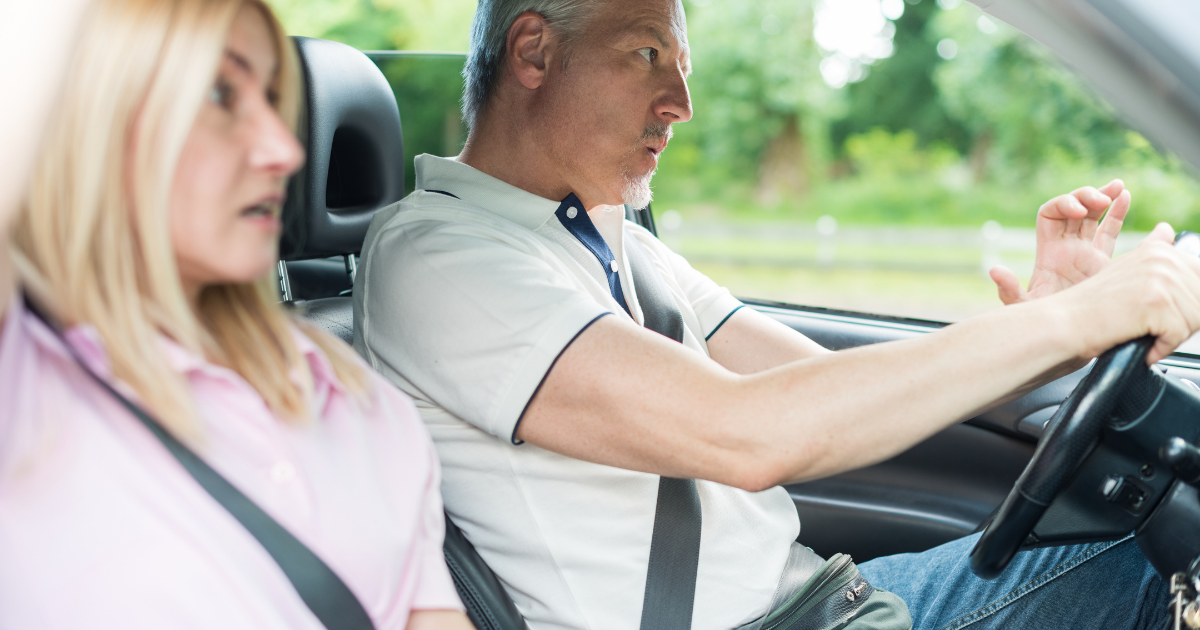Does Aggressive Driving Lead to More Car Accidents?

Recent studies have revealed that aggressive driving causes more car accidents and more than double the number of fatalities each year than drunk driving. According to the National Highway Traffic Safety Administration (NHTSA), aggressive driving has become a leading cause of car crashes across the U.S.
What Is Aggressive Driving?
The term “aggressive driving” is relatively new. The NHTSA defines aggressive driving as an act that endangers other drivers or their property. In other words, committing unsafe driving behaviors with no regard for others’ safety can constitute as aggressive driving. Although defining aggressive driving can be tricky in some cases. For instance, a driver traveling over the speed limit could be considered as driving aggressively by law enforcement.
Excessive speed is the leading cause of fatal crashes, and it is usually considered as an act of aggressive driving. Other examples of aggressive driving include:
- Driving in a reckless, careless, and erratic manner.
- Sudden changes in speed, cutting in and out of traffic and in front of other cars, then suddenly slowing down.
- Driving on the shoulder, ditch, median, or sidewalks.
- Ignoring traffic signs, lights, officers, safety zones, and construction zones.
- Passing where prohibited or blocking other cars, preventing lane changes and passing.
- Not signaling for other vehicles or failure to yield the right-of-way.
Traffic congestion is the top cited reason for aggressive driving and seems to trigger aggressive behavior in many drivers. Road construction and multiple roadways coming together add to the frustration, particularly during morning and evening rush hour, when some motorists may be running late to work or in a hurry to return home.
Aggressive driving can escalate quickly when drivers become emotionally charged by the other motorists around them, becoming angry or even violent, which is also known as “road rage.”
Is There a Difference Between Aggressive Driving and Road Rage?
There is a difference between aggressive driving and road rage. Legally speaking, aggressive driving is a traffic offense, and road rage is a criminal offense. The NHTSA defines aggressive driving as an assault with a motor vehicle or other weapon by the driver. It can also be an assault or another dangerous act because of an incidence on a roadway.
Road rage is an extreme case of aggressive driving that can range from obscene gestures to ramming other cars or running them off the road. Although media coverage of several extreme road rage cases has made the phenomenon widely known, the actual proven instances of road rage-related car crashes is fairly low. Some examples of road rage include:
- Yelling, cursing, name calling, or obscene gestures.
- Throwing objects at other drivers or even at pedestrians or cyclists.
- Sideswiping or ramming another car from behind or by slamming on the brakes in front of the vehicle.
- Forcing other vehicles off the road.
- Physically attacking other drivers.
- Shooting firearms at other motorists, in some extreme cases.
Am I Driving Aggressively?
Every driver is capable of aggressive driving. Most drivers have exhibited an aggressive driving behavior at some point, but they may have not known they committed such an act. As previously mentioned, speeding can be considered aggressive driving, which is a common offense.
Studies show that some drivers are more susceptible to driving aggressively, depending on their personality traits. People who are competitive or antisocial are more prone to aggressive driving.
According to the American Automobile Association (AAA) Foundation’s Annual Traffic Safety Culture Index in 2019, millions of drivers engaged in aggressive driving behaviors in the past 30 days prior to the survey. The following are some aggressive driving behaviors that were found in the survey:
- Switched lanes quickly/or very close behind another driver.
- Made rude gestures, such as honking and yelling.
- Drove 15 or more miles per hour over the speed limit on a freeway.
- Drove through a red light.
- Passed in front of a vehicle less than a car length apart.
- Increased their speed when another vehicle attempted to pass.
- Prevented another vehicle from merging in front of them.
- Forced a merging vehicle into traffic.
What Should I Do if I Become Targeted by an Aggressive Driver?
Encountering an aggressive driver can be an intimidating and frightening experience, but remaining calm is the safest response. Do not return rude gestures, avoid eye contact and confrontation as much as possible. Move out of the way if possible, and do not engage with the aggressive driver in any way. If the driver continues the altercation, get their license plate number, vehicle description, and call the police immediately.
Interactions with an aggressive driver are not always on a freeway and can happen anywhere, including city streets and even parking lots. If you are forced to stop at a traffic light or intersection while an aggressive driver is targeting you, do not get out of the car under any circumstances, and call the police immediately. Should you be injured due to an aggressive driver, it is recommended to retain the services of an experienced lawyer.
Norristown Car Accident Lawyers at Anthony C. Gagliano III, P.C. Provide Legal Assistance to Those Injured in Aggressive Driving Accidents
Being injured by an aggressive driver is a frightening experience. Our skilled Norristown car accident lawyers at Anthony C. Gagliano III, P.C. can help you after any type of aggressive driving collision. Call us at 267-861-7100 or contact us online to schedule a free consultation today. Located in Philadelphia, we serve clients throughout Montgomery County, Delaware County, Bucks County, Chester County, and Norristown, Pennsylvania.

